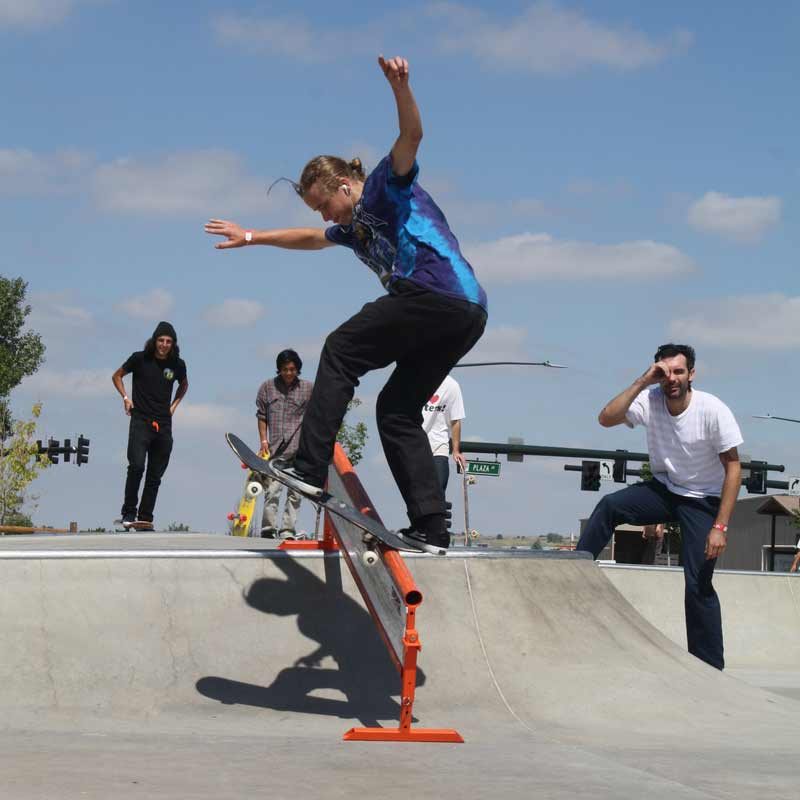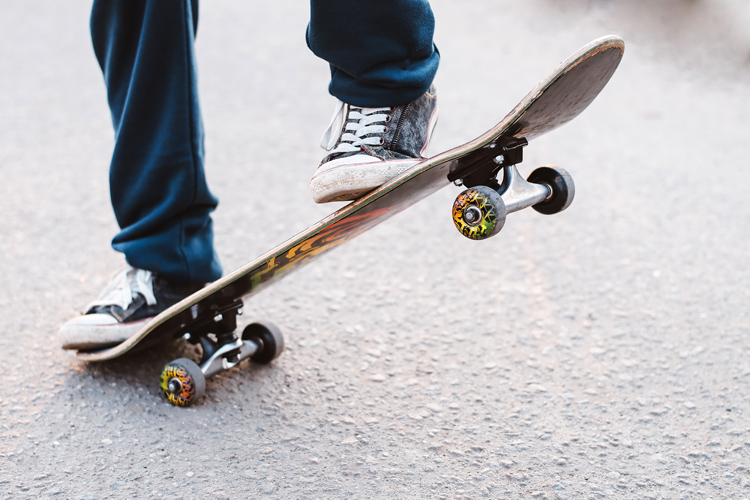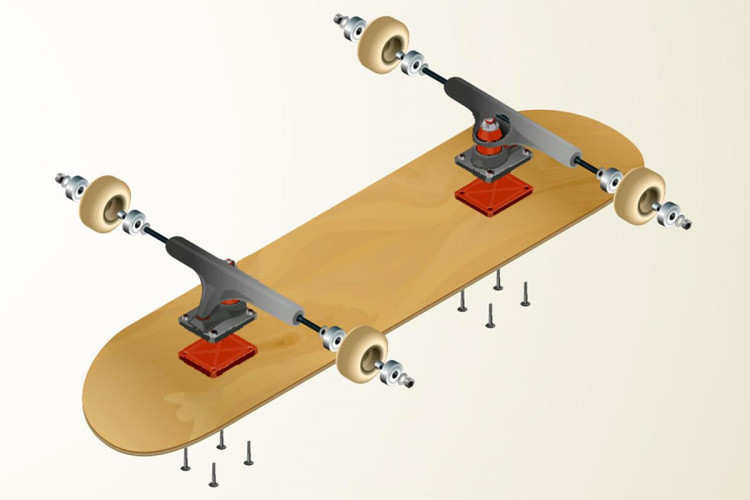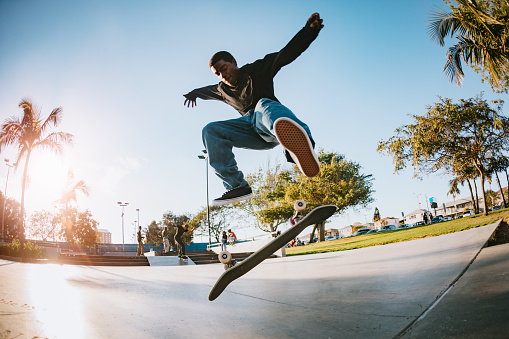How to optimize your skateboard!
So, you've probably clicked on this post because you enjoy skateboarding: whether you've just purchased one for the first time, or you've been riding for a while. But perhaps you've had those moments where you're riding, you're having fun but something just doesn't quite feel right. Maybe you've been working on a new trick, but for some odd reason it just isn't working out? Or maybe you're learning to turn and it feels like an impossible task.
Of course, practice makes perfect. Although, similar to roller skates, there are different components to a skateboard that may not quite suit your needs. In this article, you can read all about the different parts and how to choose them, making your life just that little bit easier.
The Deck
Let's start with the easy stuff. The deck is the wooden surface that the rider stands on. These come in a variety of colours and designs, so they're always fun to browse!

The deck that you choose should be slightly narrower than the length of your feet.
However, those who like to perform flip tricks and technical tricks usually prefer to stay on the narrower end of the spectrum. This is because narrow boards are more reactive, so they flip easier. They are also less stable though, so perhaps not a suitable choice for a beginner.
On the other hand, those who like to skate in big bowls and on hand rails, for example, usually go for a wider board. These boards are more stable, so they also work nicely for the purpose of transportation. It should be kept in mind though that they are more difficult to manoeuvre than a narrow board.

The deck has grip tape on the top to prevent the rider from slipping. The bottom of the deck is where all the other parts are attached.
The Truck
Usually made of steel, the truck is what holds the rider's weight. 
The different parts of the truck can be referred to using separate names. In the image above, the rectangular section of metal is called the baseplate. This is what attaches to the deck.
Sticking out of the baseplate is a large pin called the kingpin. The size of the kingpin will determine how close the deck is to the ground. A larger kingpin will create more space, a shorter one will create less. This aspect largely relies on the size of the wheels that you choose. Larger wheels will need more space, smaller wheels will require less.
On the other end of the kingpin, the hanger is attached. This is the T-shaped part. It is usually made of steel, although lighter alternatives do exist for those who enjoy performing tricks, as a lighter skateboard would make this easier.
Between the baseplate and the hanger, a bolt attaches the bushings to the kingpin. This is the bolt that can be loosened and tightened to affect how the skateboard turns. Bushings come in a variety of hardness levels. The softer the bushings, the easier the skateboard is to turn. However, heavier riders may prefer harder bushings.
Also located between the baseplate and the hanger, a rider may decide to go for the optional choice of a riser and/or shock pads. The riser creates more space between the deck and the wheels, preventing the wheels from scraping on the deck. Therefore, if you decide to have larger wheels, you may want to consider having a riser. As the name implies, shock pads give extra cushioning, allowing for better shock absorption.
Coming out of the sides of the hanger are the axles. These are where the wheels are attached, using axle nuts. The length of the axles should have the wheels positioned partially underneath the deck.
The Wheels

Attached to the axels, the wheels are what impact acceleration and turning. Your choice of wheels will largely depend on the type of skater that you are.
Large and soft wheels are brilliant for speed and absorbing bumps. This makes them ideal for cruising.
Alternatively, small and hard wheels provide greater control over speed and manoeuvrability, making them suitable for skate parks and tricks.
The hardness of wheels are scaled on the Durometer: soft wheels range from around 75a-85a, whereas harder wheels range from around 85a-100a.
Small wheels range from around 48-50mm, and hard wheels range from around 55-60mm.
It's important to not forget about the bearings! These are round metal discs that fit into your wheels. The better quality the bearings, the better the speed.

Hopefully this post was useful in giving you the knowledge to make the most out of your skateboarding experience.
What have you learned, and how will you apply it to your skateboard? Is there any more information that you would like to be covered?
Let us know!



